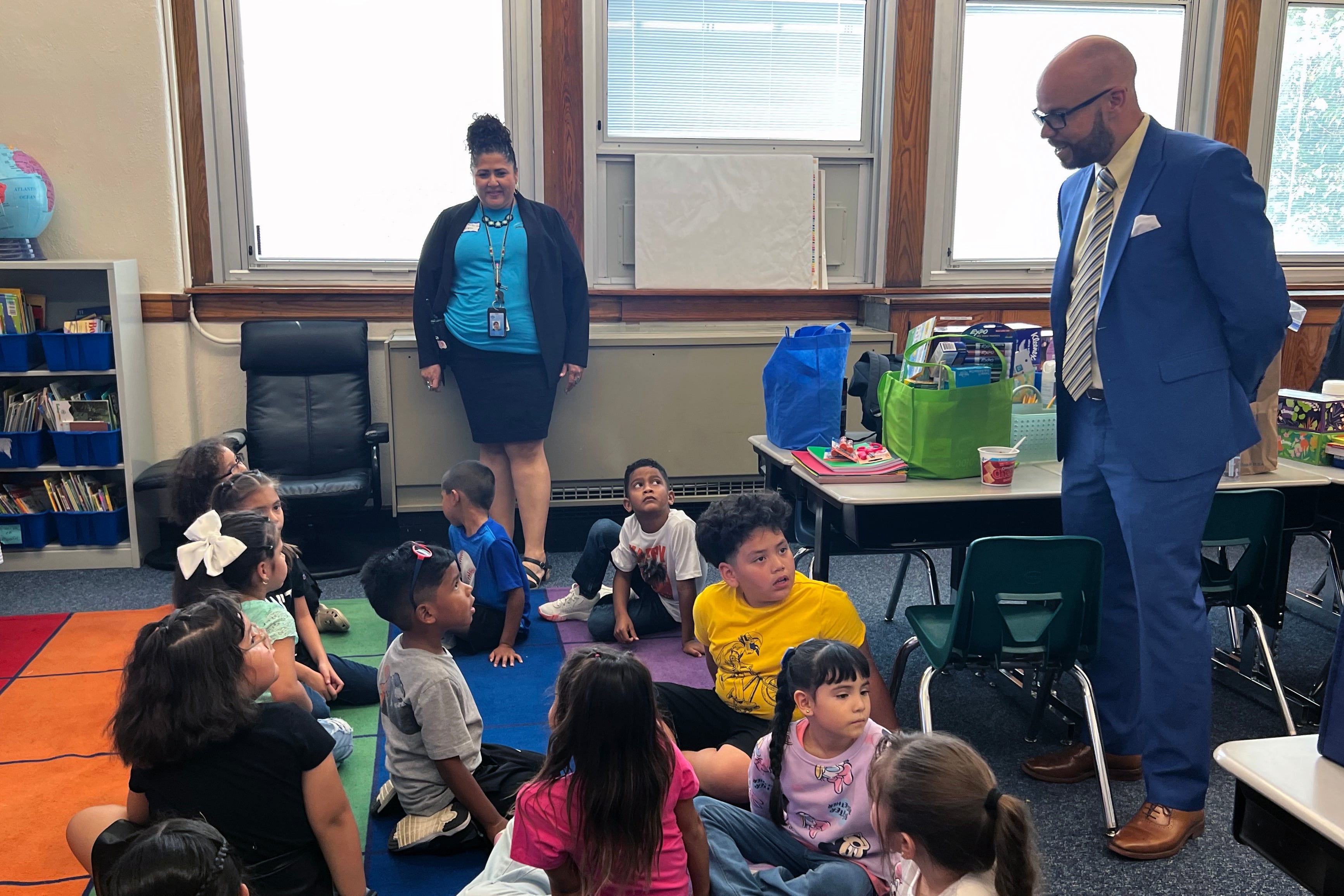Enrollment in Colorado public schools declined more slowly than in past years, while several districts in the Denver metro area saw gains.
The October 2024 enrollment count, which the state uses to determine how much money each school district receives, showed Colorado public schools with 881,065 students, down 0.1% from 881,464 a year earlier, according to data released Wednesday by the Colorado Department of Education.
In a sign of longer-term trends, early grades have far smaller numbers of students than the high school grades, the data showed. For example, Colorado has 74,727 students in 12th grade preparing to graduate this spring, and 69,455 students in the class behind them. Meanwhile, this year’s kindergarten class has just 58,604 students.
Preschools run by school districts have 31,861 students this year, down almost 200 students from last year.
The state demographer expects the statewide decline to continue through about 2028, due partly to declines in both birth rates and migration to the state.
Some metro area districts that had been experiencing declining enrollment recorded an increase. Of 15 districts in the Denver metro area, seven had an increase in enrollment, compared with just three that did last year. The new gainers were Cherry Creek, Mapleton, Westminster, and Englewood.
Even so, only one metro area district — the 27J school district based in Brighton — now has more students than it did in 2019, before the start of the pandemic.
Statewide, of 186 districts and BOCES, just 63 had an increase in enrollment from the previous year, while 119 had a decrease, and four had flat enrollment. In 2023-24, 67 districts had an increase over their previous year’s enrollment.
Under the state’s education funding system, fewer students means fewer dollars, but to give districts more predictability and avoid big changes from year to year, Colorado uses averages of districts’ four most recent years of enrollment.
Gov. Jared Polis is proposing to end that averaging and use the single year’s October count instead to calculate funding levels, a change that many district leaders oppose.
Last year, some districts complained that the October numbers deciding their funding didn’t reflect the many new migrant students with higher needs who enrolled in their districts later in the year. Colorado lawmakers made a one-time adjustment to give some districts additional funding for those new students.
This year, districts aren’t seeing the same midyear influx of migrant students.
Chuck Carpenter, chief financial officer for Denver Public Schools, told the school board at a recent meeting that last year’s influx after October was unusual but that keeping those new migrant students this school year allowed DPS to surpass its enrollment projections.
“We are not seeing continued inflows of students,” Carpenter said. “And we think we are in a normal trend with enrollment right now and going into next year.”
Official October enrollment numbers from the state don’t track how many of the students are new to the country.
But overall, the state saw a rise in the number of students who are labeled as English learners, or “multilingual learners” as the state now calls them. These are students who are learning English as a new language, and not all are migrants.
The enrollment data shows the state’s student population becoming more racially diverse, with the number of students identified as Hispanic growing the most.
Other groups of students that saw an increase in counts this year include students who are identified as homeless. This year, there are 14,498 students identified as homeless, 366 more than last year. These students are spread across the state. Last year, four districts each had more than 1,000 students identified as homeless, which was new, whereas this year, it’s back to only one: Adams 12.
Also, more students enrolled in online or homeschooling programs compared with last year.
Statewide, the number of students eligible for free or reduced-price meals under federal guidelines decreased by more than 2%, or 8,000 students, to 394,765.
In some districts, officials saw large declines in at-risk student populations this year, largely based on that free and reduced-price measure, as a result of changes to Medicaid. Qualifying for Medicaid allows students to be automatically counted as at-risk, but many students have now lost that eligibility.
In Colorado, currently all students receive a free school meal regardless of family income, but families are still encouraged to fill out forms to determine their eligibility under federal guidelines, because it helps the state get more federal money to pay for those free meals, and because it’s used as a measure of poverty.
District leaders have said they’ve seen families continue to fill out the forms, though some school leaders have had to do more than before to prompt families.
Look up enrollment changes at your district in the table below:
Yesenia Robles is a reporter for Chalkbeat Colorado covering K-12 school districts and multilingual education. Contact Yesenia at yrobles@chalkbeat.org.






